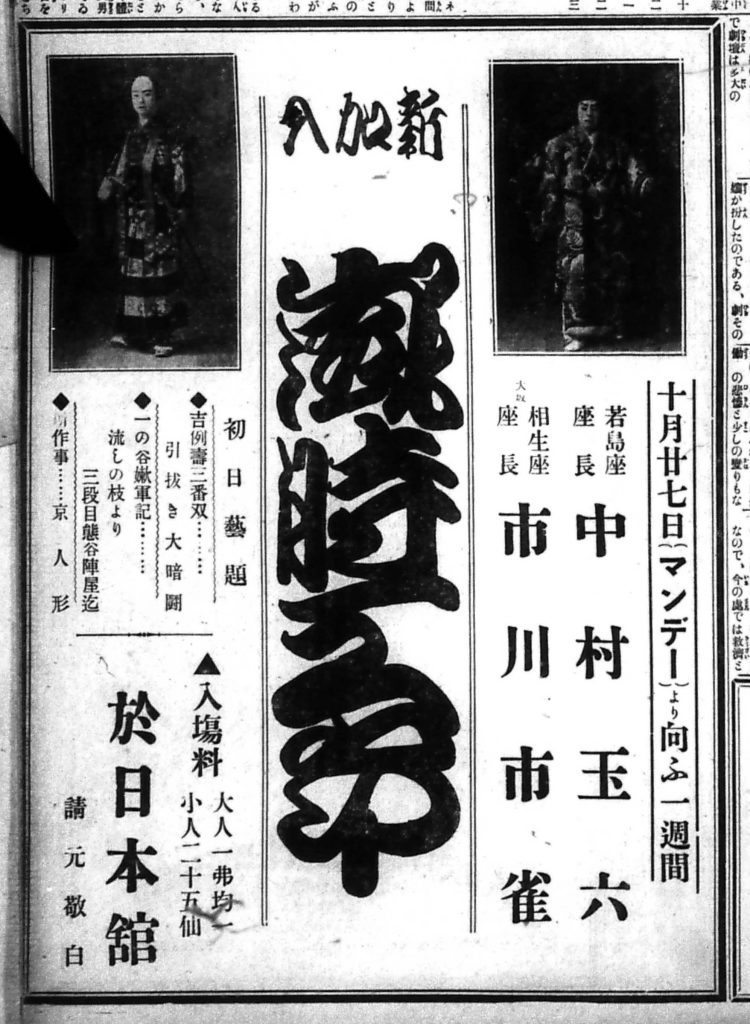Celebrating 130 years of Kabuki in Hawai’i and THE Centennial of UH English Language Kabuki
The Earliest Kabuki in Hawai’i
Though official immigration to Hawai’i from Japan began in 1885, a few Japanese had emigrated to Hawaiʻi as early as 1868. They brought with them the talents and skills required to recreate the arts of their homeland, and kabuki, at a peak in its popularity and accessibility in Japan in the last decades of the 19th century, was an important source of entertainment for the immigrants in their new home.
The first documented production was in August 1893, when “A First Class Troupe of Actors” performed a different kabuki program for three consecutive nights at the Honolulu Opera House, rented for the occasion. By June of 1898, Honolulu had its own local professional kabuki company, the Asahi-za, comprised of first-generation Japanese immigrants who were periodically joined by visiting professional actors from the Kansai region of Japan. In 1899, the first Japanese-owned and operated theatre, also called the Asahi-za, was established in Honolulu, and served as the home base for the Kabuki Asahi-za, as the troupe came to be known. Local kabuki troupes also formed on the islands of Hawai’i and Mau’i, touring the islands and playing in rented theatres (such as the Asahi-za and Eiraku-za on Oahu, and the Yamato-za in Hilo), temporary stages, the “big houses” of the plantation bosses, or old mills turned gathering places used for performance.
Beginning in the 1920s, entire kabuki troupes from Japan began touring to the Hawaiian islands. Though usually advertised as ōshibai (or grand troupes), these troupes were really koshibai (small touring groups) from the Kansai region of Japan, where such touring troupes were common. Sponsored by local entrepreneurs, local professionals often joined in the island tours of these troupes. It was not uncommon for some members of these troupes to remain behind for months, or even years, teaching dance (nihon buyō) and music to eager Japanese immigrants and their children.


